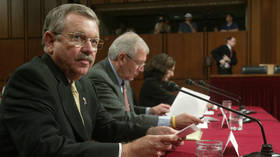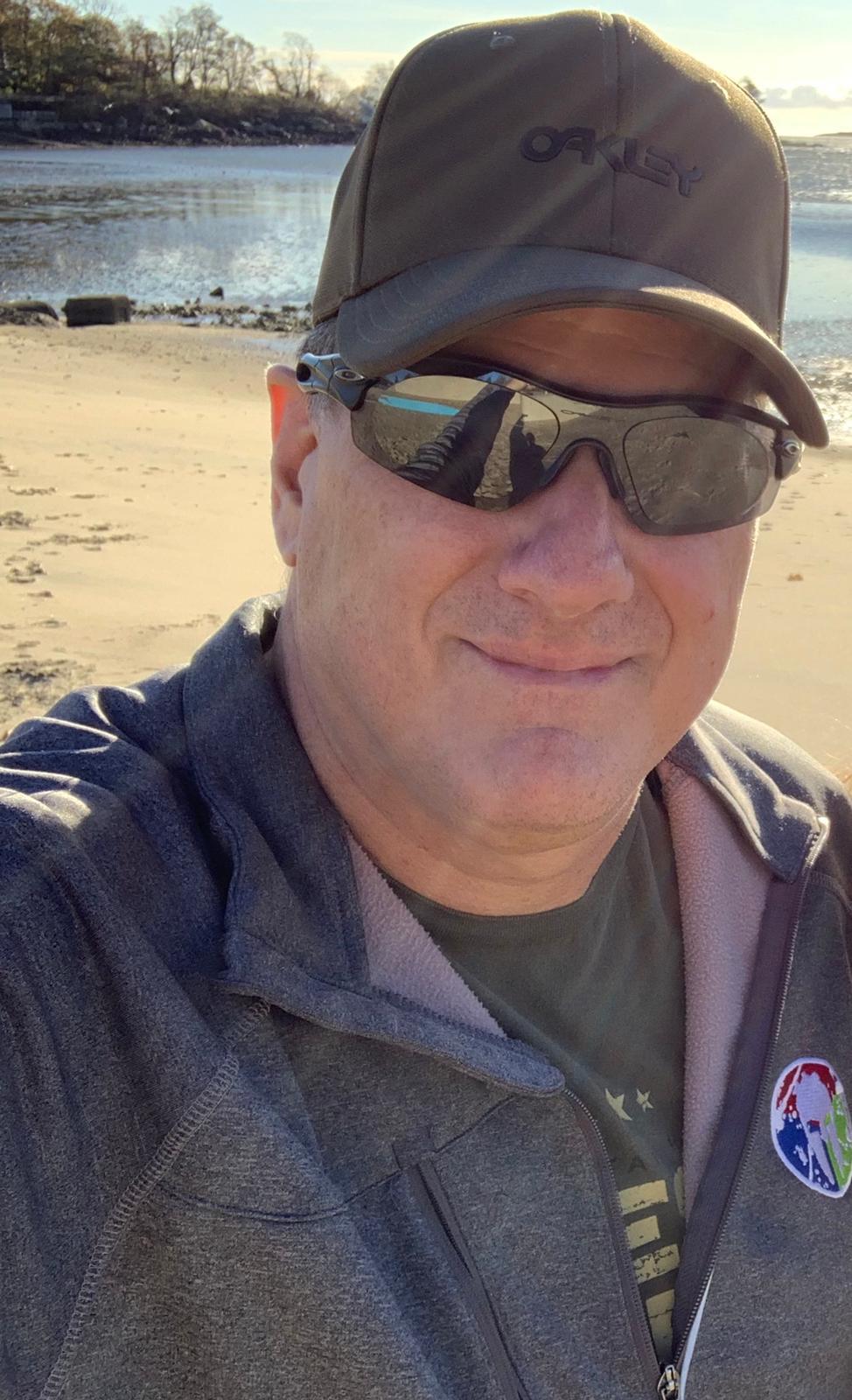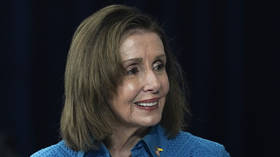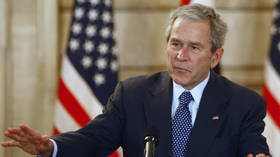This man lobbied the US to invade Iraq over ‘WMDs’, but had the courage to admit his mistake

Known for his aggressive inspection style and strong views regarding Iraqi compliance with their disarmament obligations, at the end of the day, David Kay showed his true grit by standing up to the world and confronting them with the fact that they all got it wrong on Iraq.
By the time I arrived in New York, in mid-September 1991, weapons inspectors from the United Nations Special Commission, or UNSCOM, had been on the ground in Iraq on 16 separate occasions, starting in May. Most of the inspections had been conducted in accordance with the on-site inspection template born of the American experience in implementing the intermediate nuclear forces (INF) treaty, which had entered into force in July 1988 and represented the world’s first foray into on-site inspection as a means of arms control compliance verification.
This template amounted to a gentleman’s agreement, so to speak, where one side provided a thorough declaration of the locations and materials covered by an agreement giving the inspections authority (in the case of Iraq, this meant Security Council resolution 687, passed in April 1991, mandating the creation of UNSCOM and its disarmament mission), and the other side agreed to verify the completeness of that declaration, and oversee the disposition of the material involved, in a manner which respected the sovereignty and dignity of the inspected party.
But there had been some notable exceptions to this template. When Iraq provided UNSCOM with its declaration regarding its holdings of proscribed chemical, biological, nuclear, and long-range ballistic missiles (collectively known as weapons of mass destruction, or WMD), many nations who examined this declaration were taken aback by what was not included – Iraq had denied any involvement in either nuclear or biological weapons activities, and had significantly under declared its chemical and long-range ballistic missile capabilities.
American intelligence had detected evidence of the existence of large devices known as calutrons, which had been used by Iraq to enrich uranium. These devices were not declared by Iraq. In June 1991, an inspection team from the International Atomic Energy Agency (IAEA), operating under the authority granted to UNSCOM, conducted an inspection of a facility where the calutrons had been observed by US intelligence satellites. The team, led by an experienced safeguard inspector named David Kay, arrived at the location identified by the Americans, but were denied entry for three days. Once the team was allowed to go inside, there was nothing to be found – all the materials had been removed by the Iraqis.
The American satellites located a convoy of vehicles which were loaded with the calutrons at a military camp west of Baghdad. Inspection protocol called for the inspection team to provide the Iraqis with advanced notice of their intention to visit a site designated for inspection. This time, however, David Kay led his team to the designated site without providing the Iraqis the courtesy of advanced notice. Upon their arrival, the team was prevented from entering the site by armed guards. Two inspectors climbed a nearby watchtower, from where they could see inside the facility. They observed the Iraqis driving the vehicles out of the back of the camp and radioed this fact to the rest of the team. An inspection vehicle gave chase, and soon found itself alongside nearly 100 heavily-laden trucks, some of which carried the calutrons which, in the rush to leave the camp, the Iraqis had failed to properly cover. The inspectors took dozens of photographs, before they were forced to stop by Iraqi soldiers who fired warning shots over their heads.
The damage was done. A lengthy diplomatic standoff between the inspectors and Iraq ended once the UN Security Council threatened to authorize the use of military force. Ultimately, Iraq was compelled to admit that it had an undeclared program dedicated to the enrichment of uranium but denied that this effort had anything to do with a nuclear weapons program.
In a follow-up inspection in July, David Kay was able to ferret out enough inconsistencies in the Iraqi version of events which, when combined with an emerging technical picture drawn from the results of detailed forensic investigation and analysis, pointed to the existence of a weapons program.
In September, David Kay led another team of inspectors into Iraq. This inspection was different – instead of IAEA safeguards inspectors and nuclear specialists, the team consisted of a large number of US special forces and CIA paramilitary operatives trained in the art of sensitive site exploitation – in short, how to uncover documents and other materials hidden in a site. Armed with precise intelligence provided by Iraqi defectors, David Kay’s team was able to discover an archive of sensitive nuclear documents, including some which proved the existence of a nuclear weapons program. Kay’s team took possession of the documents but was prevented from leaving the site by armed Iraqi guards.
This standoff played out live on television, with David Kay becoming a household name through his numerous interviews conducted via satellite telephone. After several days, the Iraqis once again relented, releasing the inspectors and the documents, and were forced once again to rewrite their nuclear declaration, this time admitting to the existence of a nuclear weapons program.
The man who was single-handedly responsible for this accomplishment was David Kay.
I first “met” David Kay while serving as the UNSCOM duty officer during the September crisis, talking to him over the telephone. Later, when David arrived in New York for consultations, I watched him brief the UNSCOM staff about his exploits but was too intimidated by this legendary figure to approach him.
David Kay’s high profile proved too much for the stolid bureaucracy of the IAEA, and soon afterwards, he left the IAEA for calmer pastures in civilian life.
Meanwhile, my own profile grew as an inspector. By the summer of 1992, I was involved in my own standoff with Iraq as the team I had organized and on which I served as the operations officer was involved in a days-long standoff when Iraq denied us entry into a ministry building where its archive of WMD-related material was stored. That fall, I conceived, organized, and led a pair of inspections which helped uncover the truth about Iraq’s undeclared ballistic missile force. Later, I took the lead in investigating Iraq’s so-called concealment mechanism, used to hide information and material from the inspectors. In the execution of this mission, the teams I led were often involved in difficult standoffs with Iraqi authorities and security forces, often involving Security Council intervention similar in nature to that which David Kay triggered back in the summer of 1991.
When people accused me of being just like David Kay, I took it as a compliment of the highest order.
Following my resignation from UNSCOM, in August 1998, David’s and my paths diverged considerably. Based upon my seven years of work leading UNSCOM inspections in Iraq, I was convinced that Iraq’s WMD holdings had been largely accounted for, and that nothing of significance remained.
David, acting from the foundation of his personal experience, took a different approach, accusing Iraq of concealing its WMD from inspectors who, in his opinion, were simply not up to the task of disarming Iraq in such a contentious environment.
As the person responsible for conceiving and implementing the methodologies, technologies, and tactics used by UNSCOM to counter Iraq’s concealment efforts, I took umbrage at David Kay’s denigration of the work done by myself and my fellow inspectors, and watched in growing frustration as he was able to successfully lobby the US Congress and the mainstream media into embracing his school of thought – that Iraq retained significant quantities of WMD, and this fact represented a threat worthy of US military intervention.
Thanks in large part to the lobbying efforts of David Kay, whose credibility as a former inspector was unimpeachable, the administration of President George W. Bush was able to get the US Congress to greenlight the invasion of Iraq, which occurred in March 2003. Shortly after formal Iraqi resistance collapsed, in April, David Kay was selected to head up a CIA-run organization known as the Iraq Survey Group, or ISG, which was tasked with hunting down Iraq’s WMD programs.
While many people familiar with David Kay’s biography refer to his time as an IAEA inspector as his greatest achievement, I have another perspective. By the end of 2003, David Kay was confronted with the daunting reality that the Iraqi WMD that he was tasked with uncovering, and whose existence Kay had adamantly testified before the war as existing, in fact did not. Faced with this hard truth, David Kay resigned from his position as the head of the ISG and, in a testimony before Congress in February 2004, had the courage and integrity to admit that, when it came to the existence of Iraqi WMD, “it turns out that we were all wrong, probably in my judgment, and that is most disturbing.”
David Kay passed away on August 12, 2022. He was 82 years old.
I will forever remember him as the man who, in the fall of 1991, intimidated this battle-hardened former Marine by his presence and reputation and, despite our disagreement over the pre-war disposition of Iraqi WMDs, as a man who had the integrity to stand up and be held accountable for his mistakes.
David Kay will, to me, always represent the epitome of physical and moral courage. It is something the world could do with more in these trying times, and for which the world will be a lesser place now that he is gone.
The statements, views and opinions expressed in this column are solely those of the author and do not necessarily represent those of RT.

















